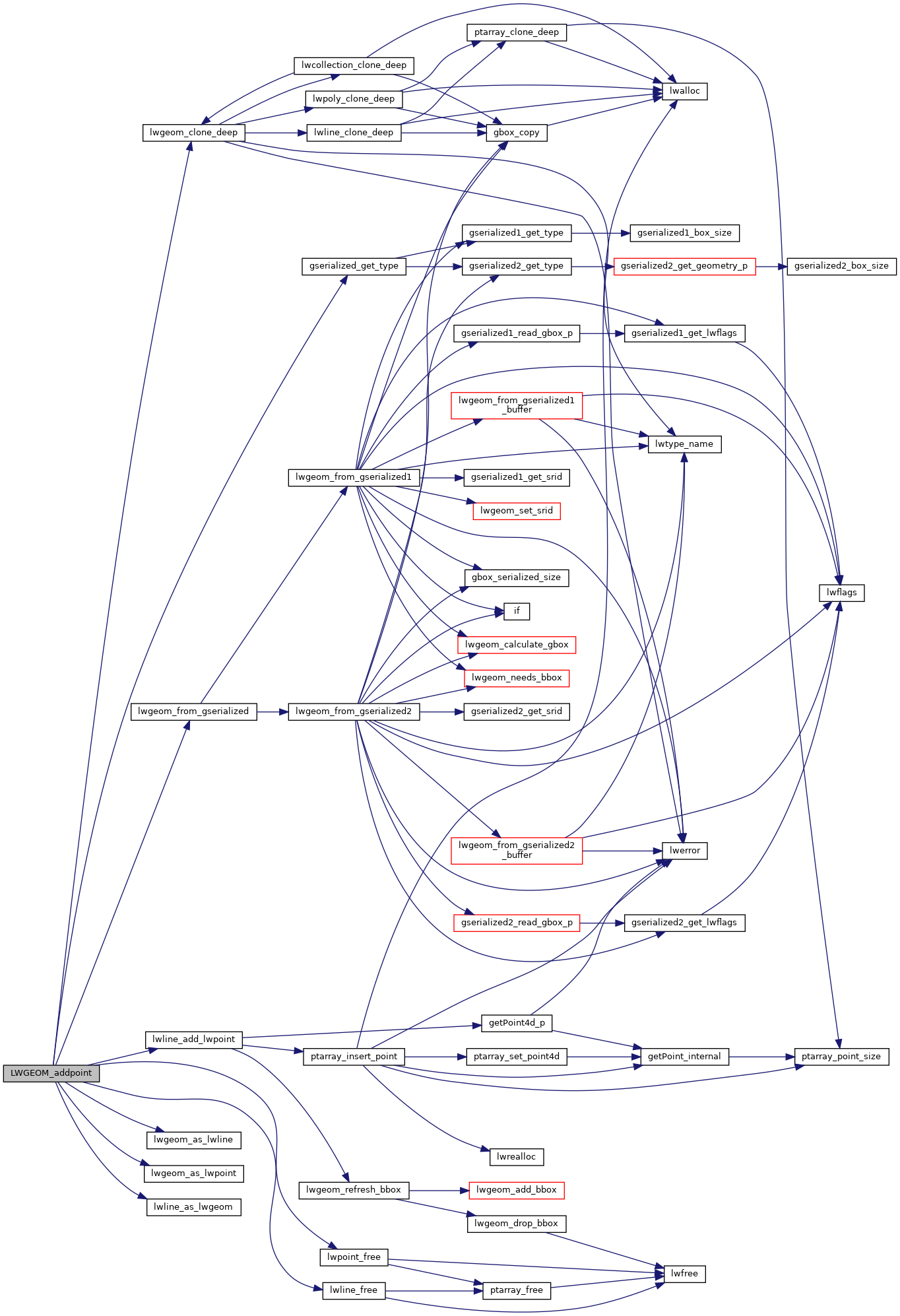◆ LWGEOM_addpoint()
| Datum LWGEOM_addpoint | ( | PG_FUNCTION_ARGS | ) |
Definition at line 2307 of file lwgeom_functions_basic.c.
LWGEOM * lwgeom_from_gserialized(const GSERIALIZED *g)
Allocate a new LWGEOM from a GSERIALIZED.
Definition: gserialized.c:239
uint32_t gserialized_get_type(const GSERIALIZED *g)
Extract the geometry type from the serialized form (it hides in the anonymous data area,...
Definition: gserialized.c:89
LWGEOM * lwgeom_clone_deep(const LWGEOM *lwgeom)
Deep clone an LWGEOM, everything is copied.
Definition: lwgeom.c:529
int lwline_add_lwpoint(LWLINE *line, LWPOINT *point, uint32_t where)
Add a LWPOINT to an LWLINE.
Definition: lwline.c:327
Definition: liblwgeom.h:443
Definition: liblwgeom.h:481
Definition: liblwgeom.h:469
References gserialized_get_type(), LINETYPE, LW_FAILURE, lwgeom_as_lwline(), lwgeom_as_lwpoint(), lwgeom_clone_deep(), lwgeom_from_gserialized(), lwline_add_lwpoint(), lwline_as_lwgeom(), lwline_free(), lwpoint_free(), POINTARRAY::npoints, LWLINE::points, POINTTYPE, and result.
Here is the call graph for this function:
